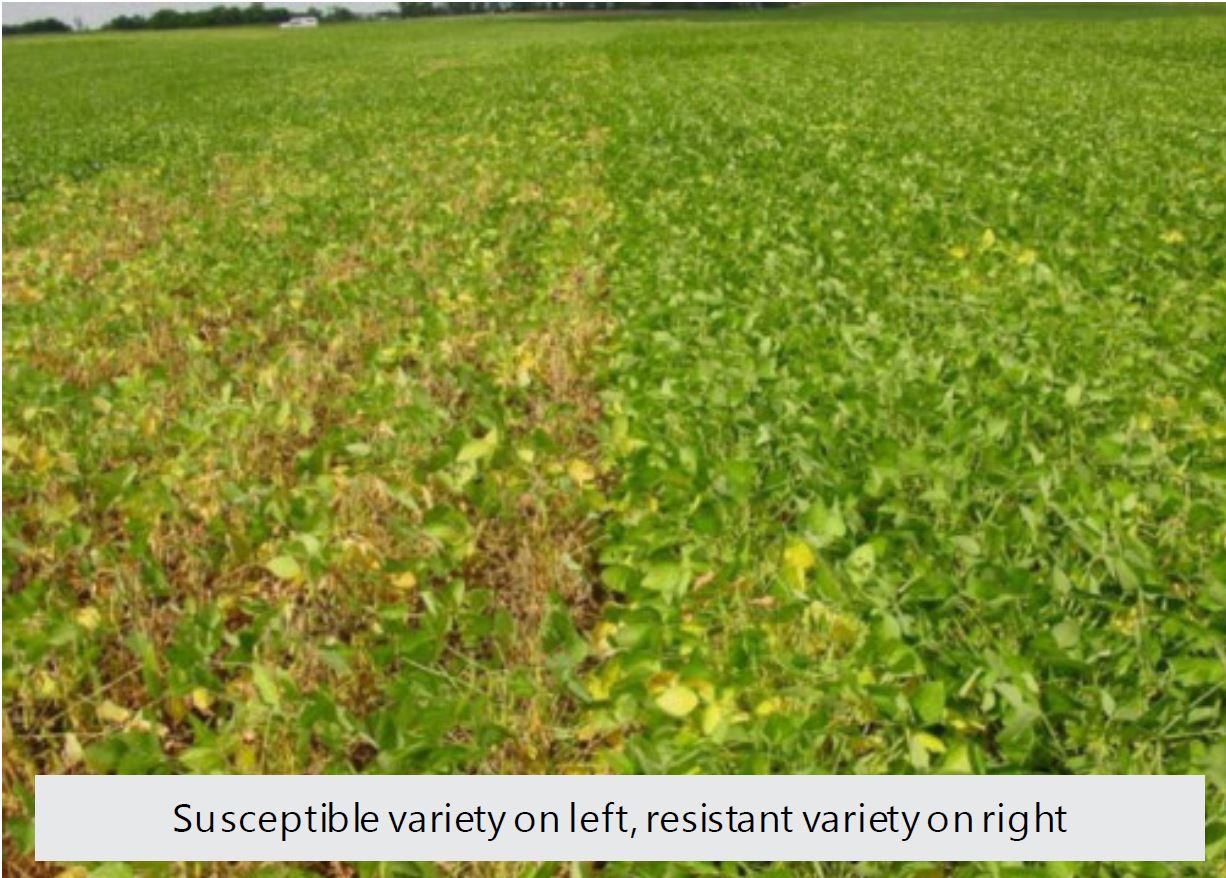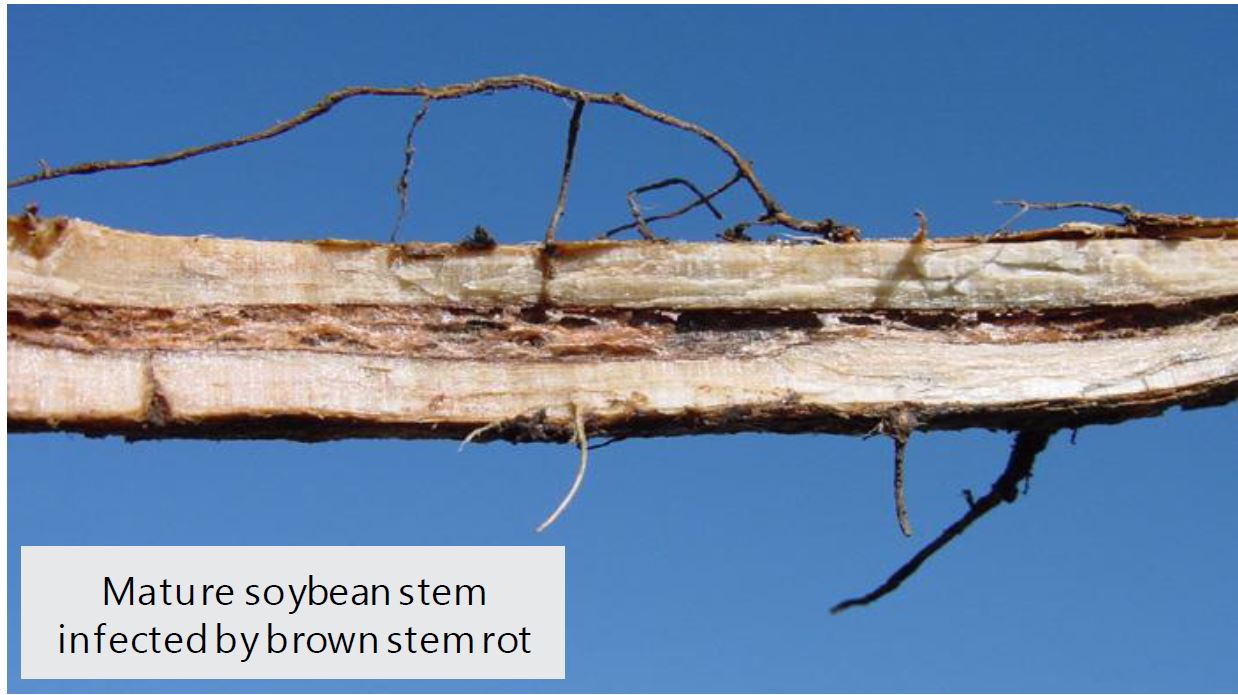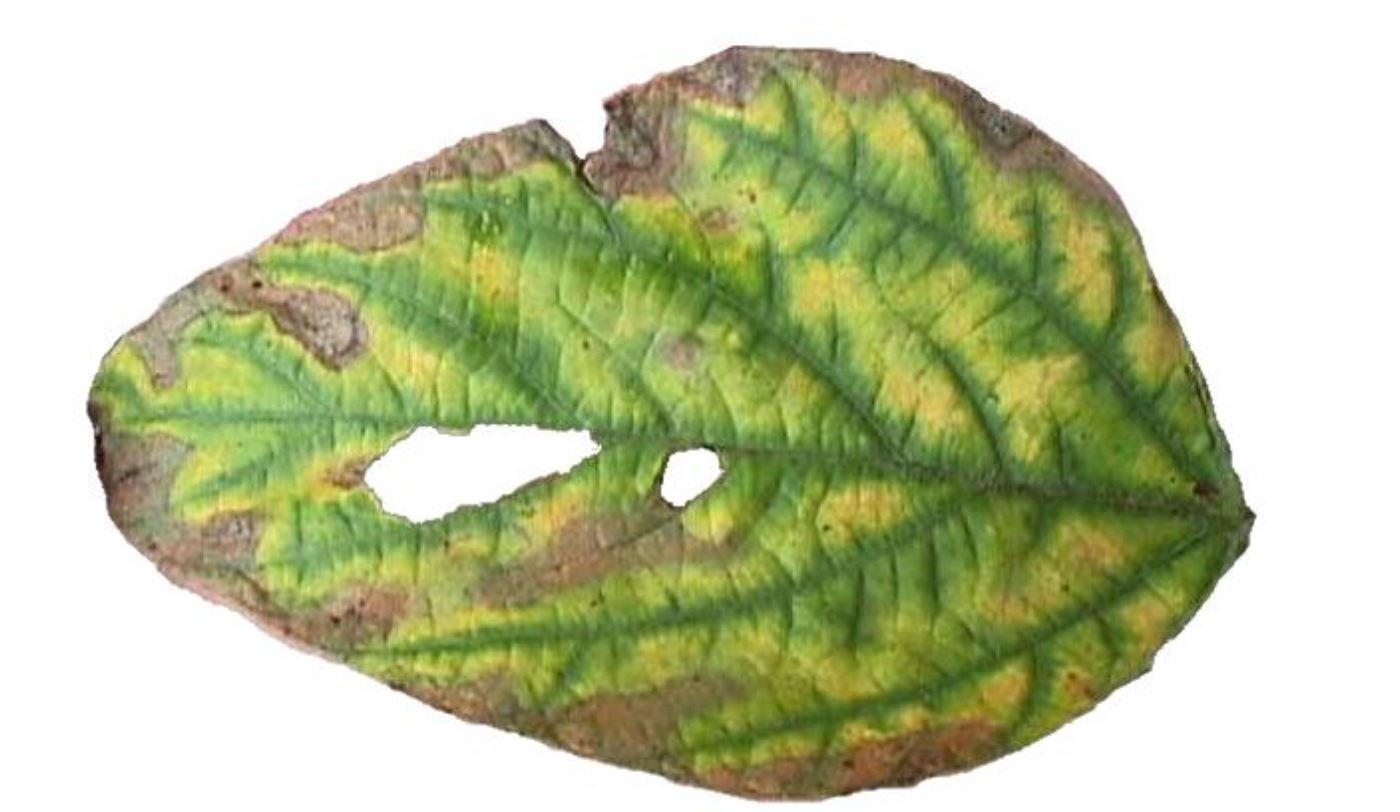- Brown stem rot (BSR) development is greatest between 60 and 80 ºF (16-27 ºC).
- Higher temperatures inhibit BSR – little or no disease develops above 90 ºF (32 ºC).
- Severity and incidence of BSR is greatest when soil moisture is near field capacity, which is also optimal for crop development.
- Symptoms worsen if disease development is followed by drought stress during pod fill.
- Severity increases when soil pH is near 6.0 and is less severe at pH of 7.0 or greater.
- BSR may be more severe in fields where SCN is also a problem.
Phialophora gregata Disease Cycle:
- Survives in infected soybean residue left on soil surface.
- Pathogen does not produce survival structures – survival is totally dependent on soybean residue.
- Fungus can continue to reproduce throughout the winter, influencing inoculum levels in the spring.
- Conidia (spores) are produced in the spring.
- Infection of new soybean crop occurs through roots (by growth stage V3) and progresses to stems.
- Infected stems become inoculum source for next disease cycle.

Image 2 – Susceptible variety on left, resistant variety on right.


